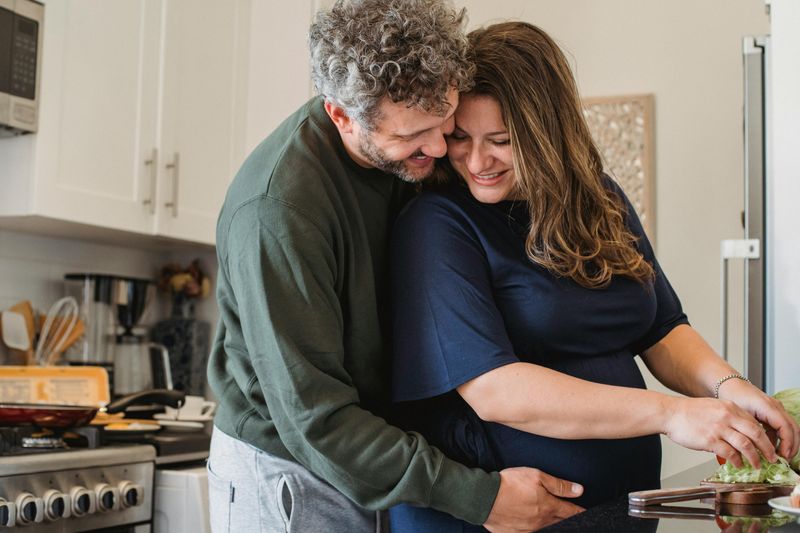The Leading Causes of Divorce—What Relationship Experts Want You to Know

Marriage is one of life’s biggest commitments, yet many couples find themselves facing divorce. Understanding why marriages break down can help couples spot warning signs early and work through problems together. Relationship experts have identified common patterns that often lead to divorce, giving us valuable insights into building stronger marriages.
1. Money Troubles That Tear Couples Apart

Financial stress creates a perfect storm in many marriages. When bills pile up and bank accounts run low, blame and resentment often follow. Couples who can’t agree on spending habits or saving goals find themselves in constant conflict.
Relationship counselors point to financial disagreements as one of the most common divorce triggers. Different money values—like one spouse being a saver while the other spends freely—create ongoing tension that erodes trust.
Experts recommend regular money talks, creating shared financial goals, and sometimes working with financial planners who specialize in helping couples. Being transparent about debts and income helps build the foundation for financial harmony.
2. Domestic Violence

Abuse in any form—physical, emotional, or verbal—destroys the safety and trust essential to marriage. Victims often stay longer than outsiders understand, hoping their partner will change or fearing what might happen if they leave.
Control patterns typically escalate over time. What starts as jealousy or criticism can gradually transform into threatening behavior, isolation tactics, or physical harm. The cycle of tension, explosion, and apology traps many in dangerous situations.
Experts emphasize that domestic violence is never the victim’s fault. Professional help through domestic violence hotlines, shelters, and counseling provides critical support for safely ending these marriages.
3. The Intimacy Gap

Physical and emotional closeness forms the unique bond between spouses that distinguishes marriage from other relationships. When intimacy fades—whether through neglect, health issues, or unresolved conflicts—couples often feel more like roommates than lovers.
Many partners struggle to discuss intimacy problems openly. Feelings of rejection build when one person consistently initiates while the other pulls away. Work stress, parenting demands, and digital distractions further widen the gap.
Marriage therapists suggest prioritizing connection through regular date nights, honest conversations about needs, and sometimes sex therapy. Small gestures of affection throughout the day help maintain the spark that brought couples together initially.
4. Affairs and Betrayal

The discovery of an affair shatters the foundation of trust marriages are built upon. The betrayed partner experiences profound grief, anger, and often traumatic stress symptoms. Meanwhile, the unfaithful spouse may struggle with guilt while still feeling pulled toward the affair partner.
Affairs rarely happen in otherwise perfect marriages. They typically signal existing problems with communication, intimacy, or unmet emotional needs. Digital technology has made infidelity easier through dating apps and private messaging.
Recovery requires the unfaithful partner to show genuine remorse and complete transparency. Marriage counselors who specialize in affair recovery can help couples rebuild trust, though the process often takes years and success isn’t guaranteed.
5. Growing in Different Directions

Couples who once felt perfectly matched sometimes discover they’ve grown apart as years pass. Life goals shift, personalities evolve, and interests change in ways that create fundamental incompatibility. The person you married at 25 might seem like a stranger by 40.
Major life transitions often highlight compatibility issues. Having children, changing careers, or moving to new locations can reveal different priorities and values that weren’t obvious during dating.
Marriage counselors note that some growth apart is normal. The key is whether couples can find new common ground and appreciate each other’s evolution. Successful marriages adapt and find ways to support individual growth while maintaining core connection.
6. Communication Breakdown

Communication problems act as both symptom and cause of marital distress. Couples who can’t express needs clearly or listen effectively find themselves trapped in cycles of misunderstanding. Small irritations balloon into major conflicts when left unaddressed.
Harmful communication patterns include criticism, defensiveness, contempt, and stonewalling—what experts call the “Four Horsemen” of relationship apocalypse. Cultural differences and family background also influence how partners interpret messages.
Relationship experts recommend learning specific skills like using “I” statements, active listening, and taking timeouts when discussions become heated. Regular check-ins about relationship satisfaction help catch problems before communication completely breaks down.
7. Addiction’s Toll

Alcohol, drugs, gambling, or other addictions create a destructive third party in marriages. The addicted spouse prioritizes their substance over relationship needs, while their partner often becomes trapped in enabling or controlling behaviors.
Financial strain typically accompanies addiction problems. Money meant for bills goes to supporting the habit, creating practical hardships alongside emotional ones. Trust erodes through broken promises, lies, and personality changes.
Recovery specialists emphasize that both partners need support. The addicted spouse requires appropriate treatment, while their partner benefits from groups like Al-Anon. Some marriages survive addiction when both people commit to healing, but others reach a breaking point where divorce becomes necessary for safety and sanity.
8. Constant Conflict and Arguments

Marriages buckle under the weight of relentless fighting. When the same arguments play on repeat without resolution, partners eventually surrender to exhaustion. The nervous system can’t sustain constant alertness to potential conflict.
Certain argument styles predict divorce with remarkable accuracy. Name-calling, bringing up past mistakes, and character attacks create deep wounds that accumulate over time. Even couples who love each other reach breaking points when peace seems impossible.
Conflict resolution specialists teach couples to fight fairly by focusing on specific issues rather than attacking character. Learning to repair after arguments—through sincere apologies and reconnection efforts—helps prevent the buildup of resentment that drives many couples apart.
9. The Young Marriage Challenge

Couples who marry in their teens or early twenties face higher divorce rates for good reason. Young brains continue developing into the mid-twenties, particularly in areas related to decision-making and understanding consequences. Identity formation remains fluid during these years.
Financial instability adds practical pressure to young marriages. Student loans, entry-level jobs, and limited life experience create stress that more established couples might weather more easily. Young spouses often lack conflict resolution skills needed for lasting partnership.
Marriage counselors note that couples who marry young can succeed with strong support systems and willingness to grow together. However, many discover they’ve changed dramatically by their late twenties, wanting different things than when they first committed.
10. When Looks Fade and Attraction Wanes

Marriages built primarily on physical attraction face unique challenges as bodies inevitably change. Aging, weight fluctuations, illness, pregnancy, and other natural transitions test relationships founded on appearance rather than deeper connection.
Society bombards us with unrealistic beauty standards that create pressure within marriages. Partners sometimes feel entitled to continued physical perfection or believe attraction should remain effortless without emotional investment.
Relationship researchers find that successful long-term couples develop a different kind of attraction—one based on emotional intimacy, shared history, and appreciation for the whole person. Marriages that survive decades involve partners who see beauty in the changes life brings, not just in youthful appearance.
11. Walking Down the Aisle for All the Wrong Reasons

External pressure pushes many people into marriages they might otherwise avoid. Family expectations, religious communities, pregnancy, financial convenience, or fear of being alone can all motivate wedding vows for reasons that don’t sustain long-term commitment.
Red flags often appear during engagement but get dismissed amid wedding excitement. Friends and family might notice problems the couple ignores. Cultural expectations sometimes override personal doubts about compatibility.
Marriage counselors frequently see couples who married for practical reasons without emotional foundation. While some develop deeper connections over time, others discover that convenience alone can’t create the intimacy marriage requires. The resulting disconnect eventually becomes too painful to ignore.
12. Marriage Myths and Disappointment

Movies, books, and social media create fantasy versions of marriage that real relationships can’t match. The belief that true love means constant happiness or that the right partner will fulfill all needs sets couples up for crushing disappointment.
Unrealistic expectations about romance, sex, conflict, and emotional support create constant dissatisfaction. Partners feel cheated when marriage requires work rather than providing effortless bliss. The contrast between expectation and reality breeds resentment.
Relationship educators focus on preparing couples for marriage’s realities rather than its ideals. Understanding that all relationships have conflict, boring periods, and challenges helps partners navigate rough patches without concluding they’ve chosen wrong. Realistic expectations actually lead to greater satisfaction.
13. Value System Misalignment

Values serve as our internal compass, guiding decisions about everything from parenting to politics. When spouses discover fundamental differences in their core beliefs, everyday choices become battlegrounds. These conflicts feel more threatening than practical disagreements because they challenge identity.
Religious differences often create particularly difficult tensions, especially when children enter the picture. How to raise kids, which holidays to celebrate, and what moral lessons to teach become sources of ongoing conflict.
Family therapists help couples distinguish between preferences and true values. Not all differences require perfect alignment, but some represent genuine incompatibility. Successful couples find ways to respect different perspectives while creating shared family values that both can support.

Comments
Loading…